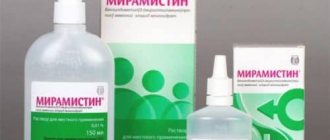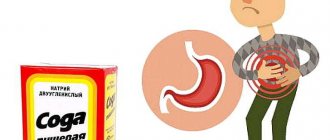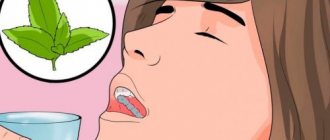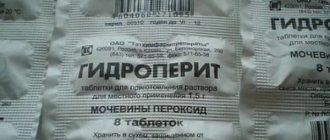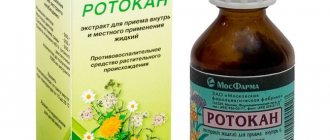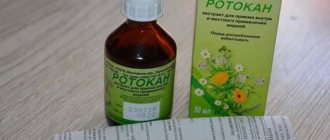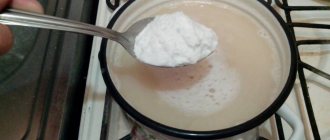Nosological classification (ICD-10)
- B37.9 Candidiasis, unspecified
- J02.9 Acute pharyngitis, unspecified
- J03.9 Acute tonsillitis, unspecified (angina agranulocytic)
- J04.0 Acute laryngitis
- J37.0 Chronic laryngitis
- K05 Gingivitis and periodontal diseases
- K05.4 Periodontal disease
- K11.8 Other diseases of the salivary glands
- K12 Stomatitis and related lesions
- K14.0 Glossitis
- Z01.2 Dental examination
- Z100* CLASS XXII Surgical practice
Types of stomatitis in adults
The clinical picture of the disease indicates that stomatitis can be mild or severe, have an acute or chronic course. To facilitate the diagnosis and treatment process, experts have developed the following classification of the disease.
- Allergy is usually a chronic disease that occurs as a result of an allergic reaction of the body to an irritant. In addition to the characteristic ulcers, it may be accompanied by the appearance of white spots, blisters and small hemorrhages on the mucous membrane.
- Herpetic or herpes - the disease occurs due to the entry of the causative agent of the herpes virus into the human body. Stomatitis of this type is characterized by an acute course. Bubbles appear on the surface of the mucous membrane, which open to form erosions and crusts.
- Traumatic (bacterial) – a consequence of mechanical trauma to the oral mucosa and infection entering the wound. As a rule, the disease is mild, with symptoms characteristic of stomatitis.
- Catarrhal and catarrhal-hemorrhagic stomatitis is a mild form of stomatitis, the causes of which are poor oral hygiene, the development of candidiasis, decreased immunity or gastrointestinal pathologies. The disease is accompanied by a typical clinical picture for the disease.
- Candidal (fungal) stomatitis is an acute form of the disease, the so-called thrush, caused by the activity of bacteria of the genus Candida. It is most common in young children, the elderly, and patients who overuse antibiotics. Accompanied by the appearance of a white coating on the mucous membrane, a burning sensation and an unpleasant taste in the mouth.
- Ulcerative is a severe form of the disease that occurs independently or as a result of a complication of the catarrhal course of stomatitis. It occurs acutely, with increased body temperature and enlarged lymph nodes. The resulting ulcers are very painful and can unite and form extensive lesions of the mucous membrane.
- Aphthous stomatitis is a severe form of the disease, occurring acutely or chronically. Accompanied by the appearance of single or multiple gray-white ulcers. The ulcers are surrounded by a red halo and are very painful.
It is important to know! By analyzing the condition of the oral mucosa, the nature of the ulcers and the patient’s complaints, specialists accurately determine the type of stomatitis and make an accurate diagnosis. Thanks to this, treatment of the disease occurs quickly and without complications.
Composition and release form
| Lozenges | 1 table |
| benzydamine hydrochloride | 3 mg |
| excipients: isomaltose; racementol; aspartame; citric acid monohydrate; mint flavor; lemon flavoring; quinoline yellow dye (E104); indigo carmine dye (E132) |
in a package there are 10 tablets, each of which is wrapped in waxed paper, placed in a wrapper made of two-layer aluminum foil; in a cardboard pack 2 packages (wrappers).
| Solution for topical use 0.15% | 100 ml |
| benzydamine hydrochloride | 0.15 g |
| excipients: ethanol 96%; glycerin (glycerol); methyl parahydroxybenzoate; menthol flavoring; saccharin; sodium bicarbonate; polysorbate 20; quinoline yellow dye 70% (E104); patented blue dye 85% (E131); purified water |
in bottles of 120 ml; complete with measuring cup; 1 set in a cardboard pack.
| Topical spray dosed 0.255 mg/dose | 100 ml |
| benzydamine hydrochloride | 0.15 g |
| excipients: ethanol 96%; glycerol; methyl parahydroxybenzoate; menthol flavoring (flavoring additive); saccharin; sodium bicarbonate; polysorbate 20; purified water |
in bottles equipped with a pump and a pressure device with a folding cannula of 30 ml; 1 bottle in a cardboard pack.
Recommendations during treatment
Treatment of stomatitis should be carried out comprehensively - local therapy, taking medications appropriate to the type of disease, and strengthening the immune system. During the treatment period, you must adhere to the following recommendations.
- Compliance with the diet - you need to exclude from the diet spicy, salty, sour, too sweet, smoked, hot, cold and any dishes that are traumatic to the mucous membranes.
- Maintaining oral hygiene . To maintain it, it is necessary to use antiseptic agents that you regularly rinse your mouth with.
- Taking vitamin-mineral complexes that strengthen the body's protective functions.
If the doctor has diagnosed the presence of candidal stomatitis, then you should not drink milk or consume fermented milk products, which activate the activity of pathogenic fungi.
Any medications should be used only as prescribed by a doctor. Especially antibiotics.
It is important to know! It is not recommended to cauterize emerging ulcers with pure alcohol solutions. The only thing that is allowed is treating the lesions with a weak solution of iodine or potassium permanganate.
Pharmacodynamics
Benzidamine is a non-steroidal anti-inflammatory drug that belongs to the indazoles group. It has an anti-inflammatory and local analgesic effect, and has an antiseptic effect against a wide range of microorganisms.
The mechanism of action of the drug is associated with the stabilization of cell membranes and inhibition of PG synthesis.
Benzidamine has an antibacterial and specific antimicrobial effect due to rapid penetration through the membranes of microorganisms with subsequent damage to cellular structures, disruption of metabolic processes and cell lysis.
Has antifungal effect against Candida albicans. Causes structural modifications of the cell wall of fungi and the metabolic chains of mycetes, thus preventing their reproduction, which is the basis for the use of benzydamine for inflammatory processes in the oral cavity, including infectious etiology.
Can stomatitis go away on its own?
As a rule, mild forms of the disease caused by trauma to the mucous membrane, poor oral hygiene or an allergic reaction of the body can go away on their own. Severe stomatitis caused by infection requires qualified treatment. In both cases, it is better not to wait and not to self-medicate. Because the disease not only causes pain and discomfort, but can also lead to generalization of infection and serious complications.
Consequences and complications of the disease
Possible complications arise when the patient ignores treatment for stomatitis. As a result, mild and severe forms of the disease become chronic. The neglected process turns into an ulcerative-necrotic and then gangrenous form of the disease, as a result of which not only the mucous membrane is damaged, but also the soft tissues of the mouth and jaw bones.
Other serious consequences of untreated stomatitis include the following complications.
- Bleeding gums.
- Scarring of the oral mucosa, disruption of its elasticity and mobility.
- Attachment of a secondary infection.
- Tooth loss.
- Voice changes – hoarseness, hoarseness.
Important to remember! A small ulcer on the oral mucosa is a potential threat to the entire body. Infection from it can spread to other organs and systems, which will disrupt the functions of the heart, liver, kidneys, gastrointestinal tract and respiratory organs.
Indications for Tantum® Verde
Inflammatory diseases of the oral cavity and ENT organs (of various etiologies):
gingivitis, glossitis, stomatitis (including after radiation and chemotherapy);
sore throat, pharyngitis, laryngitis, tonsillitis;
candidiasis (as part of combination therapy);
calculous inflammation of the salivary glands;
after surgical interventions and injuries (tonsillectomy, jaw fractures, etc.);
after treatment or tooth extraction;
periodontal disease.
For infectious and inflammatory diseases requiring systemic treatment, it is necessary to use Tantum® Verde as part of combination therapy.
Causes of stomatitis
The mechanism of stomatitis is not yet fully understood. But scientists are inclined to believe that the root cause of its development is the reaction of the human immune system to various irritants. At some point, the immune system ceases to recognize the potential threat of internal and external factors, which causes its atypical reaction, as a result of which “aggressive behavior” of lymphocytes is observed. The attack of lymphocytes against irritant molecules leads to lesions of the oral mucosa.
A variety of factors can provoke an atypical reaction of the immune system. The most likely of them are the following irritants:
- Pathogenic microorganisms that live in the mouth.
- Improper oral hygiene.
- Various damage to the mucous membrane, for example, burns from eating too hot food or mechanical injuries from seeds, nuts, crackers and other hard foods.
- General dehydration due to high fever, blood loss, vomiting, diarrhea, or thirst.
- Poor quality treatment of teeth and gums.
- An allergic reaction to dental structures in the mouth - braces, implants, crowns, bridges, etc.
- Long-term use of medications.
- A diet depleted of beneficial vitamins and elements.
- Smoking.
- Malignant formations of the oral cavity, respiratory organs or undergoing a course of chemotherapy.
- Hormonal imbalances in the body, for example in pregnant women or children during puberty.
- The presence of chronic diseases or allergies.
- Severe stress.
Interesting to know! Frequent stomatitis in adults can be caused by the use of toothpaste containing sodium lauryl sulfate, a substance added to oral care products to form a thick foam. According to recent studies, it dehydrates the oral mucosa and makes it vulnerable to various types of irritants. Patient observation data confirms the fact that avoiding the use of sodium lauryl sulfate paste can reduce the risk of developing stomatitis in adults by 81%.
Directions for use and doses
Locally. Lozenges: 1 tablet. 3–4 times a day. The tablet must be kept in the mouth until completely dissolved (for greater effect, preferably for as long as possible).
Solution for topical use: for gargling or mouthwash, use 15 ml of the drug (measuring cup included) 2-3 times a day.
An undiluted solution is used for rinsing during inflammatory processes; a diluted solution (15 ml of the drug and 15 ml of water mixed in a measuring cup) should be used daily for hygienic rinsing of the mouth and throat.
Topical spray dosed at 0.255 mg/dose: adults and elderly patients are prescribed 4-8 doses every 1.5-3 hours.
Children aged 6–12 years - 4 doses; 3-6 years - 1 dose for every 4 kg of body weight (maximum - 4 doses) every 1.5-3 hours.
What is stomatitis?
Stomatitis is an inflammation of the oral mucosa. According to statistics, about 20% of the population of our planet faces it. In adults and children, it can take the form of an independent disease or act as a symptom indicating pathologies of the body. In both cases, treatment is carried out comprehensively and under the supervision of a doctor.
What does the disease look like?
Stomatitis is not difficult to recognize. The initial stage of the disease is characterized by the appearance of mild swelling of the oral mucosa. It becomes redder, drier and shiny. A plaque may appear on its surface, and at the site of future lesions the patient feels an unpleasant itching or burning sensation.
As the disease develops, small ulcers and wounds appear on the mucous membrane - painful oval or round lesions. Their location may be the inside of the lips, cheeks, palate, tonsils, or mucous membrane under the tongue. Their appearance can be seen in the photo at the end of our article.
